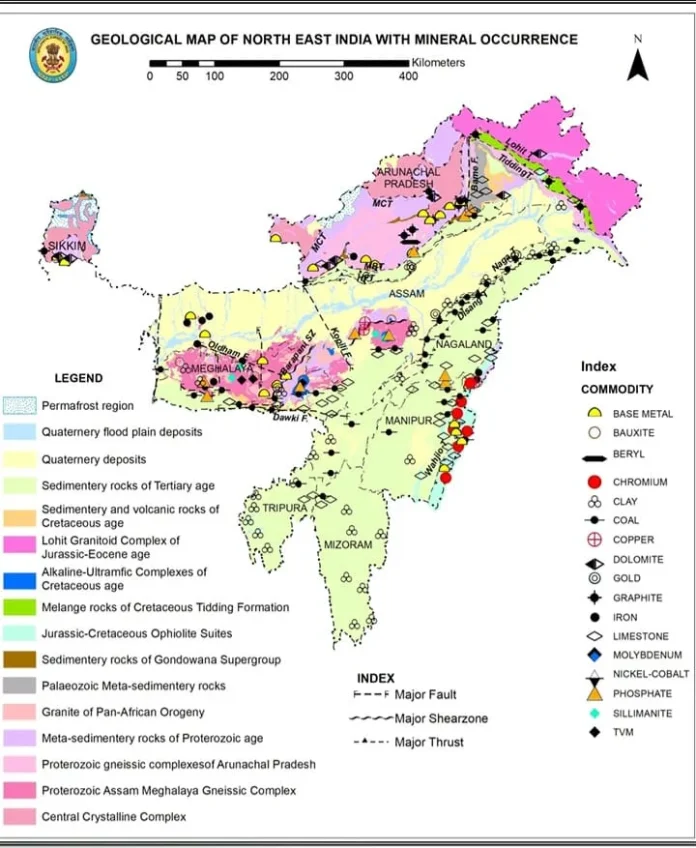GUWAHATI, June 30: The Geological Survey of India (GSI) has identified significant untapped deposits of critical and strategic mineral resources across Northeast India, positioning the region as a key contributor to India’s clean energy transition, digital infrastructure development, and defence manufacturing.
Released during the 2nd North-East Mining Ministers’ Conclave in Guwahati, GSI’s latest handbook titled “Geological Potential of North East India” highlights the region’s substantial mineral wealth, including rare earth elements (REEs), graphite, vanadium, lithium, cobalt, gold, and base metals.
“In the evolving global context of energy transition and technological advancement, critical and strategic minerals are indispensable. The Northeast has emerged as a key region with considerable potential to meet these demands,” the GSI report noted.
Among the most notable findings is India’s first major vanadium deposit in Arunachal Pradesh, estimated at 13.79 million tonnes. Vanadium is crucial for aerospace alloys and emerging battery technologies, particularly vanadium redox flow batteries for grid-scale energy storage.
In addition, over 17.89 million tonnes of high-grade graphite have been identified in Arunachal Pradesh, suitable for use in lithium-ion battery anodes and high-temperature industrial applications. REE anomalies, essential for modern electronics, electric vehicles, and defence systems, have been found in Arunachal Pradesh, Assam, and Meghalaya.
Other significant highlights from the report include:
- Preliminary traces of lithium in brine-rich zones of Arunachal Pradesh and Nagaland, and in Precambrian rocks in Assam.
- Nickel and cobalt indications in ophiolite complexes of Nagaland and Manipur.
- Bauxite deposits in Meghalaya’s West Khasi Hills.
- Chromite resources in Manipur’s Ukhrul district, along with clay and lignite in Kangvai Valley.
- 18.29 million tonnes of iron ore in the Chandardinga area of Dhubri district, Assam.
- High-silica glass sand in Nagaon and Karbi Anglong districts, and placer gold in the Subansiri River basin in Upper Assam.
- Extensive coal and limestone reserves in Meghalaya and Nagaland.
While Mizoram’s mineral potential remains limited due to its younger geology and lack of exposed basement rocks, the report points to prospects in hydrocarbons, clay, and construction-grade materials. In Tripura, known primarily for oil and gas, the solid mineral inventory remains modest but viable. Sikkim has also shown small-scale occurrences of copper, lead-zinc, and graphite in its Himalayan terrain.
The findings underscore the need for enhanced exploration, sustainable mining practices, and infrastructural investment in the region. With growing global demand and India’s push for self-reliance in strategic sectors, Northeast India could play a vital role in securing the country’s mineral future while driving regional economic growth.

